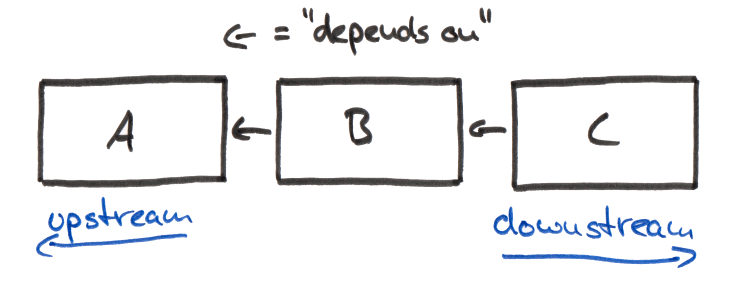
Historical Challenges with #RevOps
May 23, 2022
The ICP in Revenue Marketing
October 3, 2022A company’s go-to-market (GTM) strategy should be one of the most important undertakings that involves every part of your business. Distilling part of this down to understanding your Ideal Customer Profile (ICP) is the foundation to building a strong GTM motion. Missing the mark on selling/marketing to your ICP can have massive downstream impacts across your entire business.
Sales & XDRs
The impact of an undefined or poorly defined ICP has a very linear disruptive effect on your sales & xdr teams. Sales strategy is generally built with the underlying premise that “sales is a volume game” – meaning we need to reach out to a high volume of prospects in order cast a wide enough net to capture the prospects who are likely to purchase your product.
A litany of technologies exist that enable this approach – sales engagement tools, pipeline/forecasting tools, etc. All of these technologies have the purpose of trying to move prospects to the next stage of your selling process or understanding which attributes might indicate the willingness of that prospect to move to the next stage of your process.
The size of your sales team is also just a factor of your revenue target and the number of conversations that need to occur in order to close enough customers. This means if you understand your win rate is 10% and your average deal size is $10k that you’ll need to produce 10 meetings to generate $10k in revenue. The consequence of this approach is to factor the number of sales people needed to hit that revenue target. This directly impacts how much capital you are planning to deploy in order to hire enough people in order to set enough meetings at the top level that will convert to customers.
Much of the current analytical focus in sales teams is to understand how you might be able to improve the winability of your pipeline – or at least accurately forecast the results. Increasing win rate is generally perceived as the most controllable aspect to impacting your trajectory and the current wisdom is to analyze what is in your pipeline and how you can affect those conversations to increase winability. Intimately understanding winability prior spending any amount of resource on prospecting someone can have an outsized impact on revenue prior to wasting the efforts of your sales & xdr teams. Most organizations do some level of this analysis to define what they believe to be their ICP and in its best form usually filters down to finding look-alike prospects to our customer cohort that has the highest win rates.
Sales teams can easily spend an average of $400 per month per salesperson in order to provide supporting technology that is intended to support prospect outreach or sales metrics or otherwise improve productivity.
If we were able to quantify the amount of sales effort spent talking to unqualified prospects or completing activities (internal or external) that do not directly lead to sales it would probably be horrifying. At best these efforts are meant to be expected failures that one can learn from in order to improve processes going forward (think about all of the SDR team meetings that occur to review emails that were sent to capture success or failure in getting a response from a prospect).
This all informs the hypothesis that understanding the completeness of winability of a prospect would potentially eliminate non-productive efforts and spend all the way through your GTM motion. There are also pretty important consequences for other functions in your business that sales teams are not always acutely aware of, given the ultimate focus of your top line revenue targets.
Marketing
The first orbit of impact on your GTM strategy directly drives your sales team size, productivity, and efforts. The second orbit of impact is typically on your Marketing team. At its core in the GTM process, marketing exists to drive awareness & reach to a broader segment of prospects, earlier in the funnel. Thus, the undefined or poorly defined ICP will mean you have a broader audience you are trying to capture.
The number of contacts marketing is responsible to track and ultimately generate demand from factors the spend in your marketing org. More spend in marketing to reach more prospects equates directly to higher customer acquisition costs and a lower conversion of unknowns to qualified prospects.
Marketing support for existing opportunities should have some really positive results for your sales team. But for each prospect that comes to a marketing sponsored event, for instance, the return on those dollars is diminished in proportion to the expected winability of the prospect.
Account Based Marketing (ABM) as a category was created to start addressing effectiveness of marketing and also fuse the efforts of Sales & Marketing. Becoming more targeted on prospects that showing indications of buying your product is a really good start if you are able to support the investment in a product like 6sense or Demandbase and have the correct alignment internally to lean into this approach, but this does little to impact the drag that improperly aligned customers will have on your broader team.
Customer Success/Support/Implementation
Customer facing teams almost universally experience some level of friction from customers that sales has closed. Do sales teams, at times, close deals that are not a great fit for your product or were given slightly misaligned expectations of the product? Of course that happens – I would argue that the revenue targets mentioned above help to encourage this behavior with the amount of data & information used in defining the revenue target having an inverse relationship to the number of non-ideal customers you have.
If you have heard your CS or other customer teams mention anything that sounds like the 80/20 rule when it comes to efforts they deploy against the customer base, you can place a pretty safe bet that a sizable portion of those higher effort customers may not be ideal customers (meaning your product, their expectations, and your products integration to the customer tools & processes are not necessarily expertly aligned).
Imagine a state where you were able to reduce 10% of those poorly aligned customers and replace them with ideal customers. The impact this has on the size of your customer teams, the time they spend with customers and the time they’ll have to complete that feedback loop of information they receive from customers and distilling that feedback for your business to analyze and take action against.
Product/Engineering
The highest performing companies in the world will have a pretty efficient process where all of the feedback from customers & prospects is finding its way to the product & engineering teams in an articulate and actionable way. All of those inputs, at the highest level, inform the product roadmap. If the collection of those inputs come from a faulty, or even somewhat faulty, GTM process – your product roadmap is going to suffer to some degree.
A common example of this is when your product team runs an analysis of your customer base and comes to the conclusion that improving customer usage will generate stickiness of your product and therefore improve retention. In this example, your team might conclude that in your existing customer base you need to build integrations to adjacent products that your customers are using. The inputs in this analysis are inherently somewhat faulty as it encourages your product team to plan the product roadmap TO the (relatively) small cohort of customers you currently have. If you integrate with product A and all of your customers using product A create minimal effort from your customer teams AND are more winnable for your sales team, then you should be aiming to bring in more customers that use product A…Instead, you have some customers using product A, but other customers are using products competitive to product A (products B & C, for instance).
Yes – building integrations for products B & C will expand your total addressable market (TAM). But, without understanding the CAC, LTV, Win Rate and overall effort/investment you need to make in your teams to close customers using product B & C matters and should be incorporated as part of your GTM strategy.
Summary
On a long enough timeline, this cycle continues until your TAM expands to include every company. In this exaggerated timeline, you will need to invest in your Marketing engine to properly reach every company, your sales metrics will be diluted down to the average of every company and your CS/Product/Engineering functions will need to expand to support a growing surface area of customer cohorts. Because organizations do not have unlimited time/resources, it becomes ever more important to correctly identify those cohorts where you can dominate and surge your efforts into them.
As noted above, there are a variety of technologies and processes that all aim to treat symptoms but the true value across your entire business comes from expertly nailing your ICP and the associated focus around the most winnable prospects that will become long-term customers and push your product in a positive direction – with the added benefit of not creating stress on your CS team.




